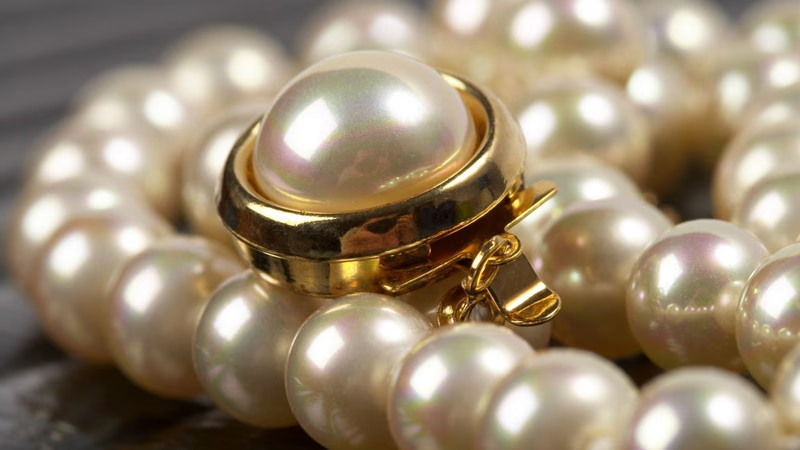
Explore pearl pricing factors in Middle East trade markets.
The type of pearl plays a significant role in determining its price. Certain types, such as natural pearls or rare varieties like conch pearls or natural-color Tahitian pearls, command higher prices due to their scarcity and uniqueness. The size of a pearl impacts its value. Generally, larger pearls are rarer and more valuable compared to smaller ones. The size is measured in millimeters, and significant jumps in size can result in exponential increases in price.
Pearls come in various shapes, ranging from perfectly round to baroque (irregular or asymmetrical). Round pearls are highly sought after and typically more expensive due to their symmetrical and balanced appearance. Other shapes, such as oval, drop, or button, may still be valuable but generally at a lower price point. Luster refers to the brilliance, shine, and reflective quality of the pearl's surface. Pearls with high luster, where light reflects well off the surface, are considered more valuable. The depth and intensity of luster significantly impact the price.
Freshwater pearls come in a wide range of shapes, sizes, and colors, and are almost identical to Akoya pearls, but are less expensive and can be bought and sold for between $50 and $2,000 a string. Another type of pearl is Tahitian, which is seen in dark colors. A string of Tahitian pearls can cost anywhere from $500 to over $25,000, depending on size and quality. But the most expensive pearl is the South Sea type, which happens to be the largest pearl as well. A string of South Sea pearls can range from $1,000 to over $100,000, according to the pearlsource. How to calculate and price pearls depends on the following factors:
- The brilliance of the pearl: the more light it reflects when the light shines on its surface, the brighter the pearl is and the higher its price.
- Symmetry: It is very difficult to find a pearl that is perfectly one handed and round, then perfectly oval pearls. Therefore, if such pearls exist, they will be very precious.
- Color of pearls: The color of pearls must be completely natural and pure. The rarer a color is, such as pink and orange, the higher its price.
- Pearl surface: If a pearl has a smooth and polished surface, it will be more valuable.
- Location: Natural pearls are more expensive than laboratory pearls. Also, open water natural pearls have the lowest price and South Sea natural pearls have the highest price.
- Size: It is natural that pearls, like any other stone, are more valuable the bigger they are.
The origin of a pearl can also impact its price. Pearls from historically renowned regions, such as natural pearls from the Persian Gulf or cultured pearls from renowned areas like the South Sea or Tahiti, may command higher prices due to their reputation and perceived quality. Market demand and trends play a role in determining pearl prices. Factors like consumer preferences, fashion trends, and cultural significance can influence the demand for specific types of pearls, thereby affecting their prices. The value of a pearl can vary dramatically depending on factors such as type, size, color, surface quality, and more. However, the value of a wild pearl is higher than a cultured pearl, and on average, a natural number is bought and sold in foreign markets from 300 to 1500 dollars. In Iran, the advertisement of all kinds of pearls is published on online buying and selling platforms, whose prices are variable.
The surface quality of a pearl is assessed by examining its smoothness, absence of blemishes, and presence of imperfections. Pearls with fewer surface flaws and blemishes command higher prices, while those with visible imperfections are less valuable. The color of a pearl influences its price. While white and cream-colored pearls are classic and widely popular, pearls with unique and rare colors, such as black Tahitian pearls or pink conch pearls, can be more valuable. The intensity, evenness, and rarity of the color impact the price. Nacre, the substance that forms the pearl's layers, affects its durability, luster, and overall quality. Pearls with thick, well-formed nacre layers are considered superior and thus more valuable.
-
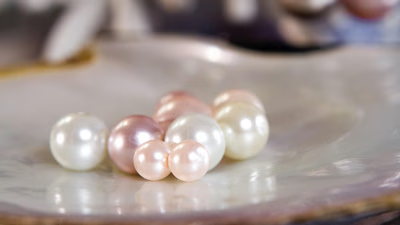
Natural pearl fishing in the Persian Gulf has a storied history, particularly around Bahrain, known for its rich oyster beds. Skilled divers employed traditional techniques to harvest oysters, facing dangers like drowning and shark attacks. This labor-intensive process involved extracting and grading pearls for local markets and international trade, significantly contributing to the region"s economy and cultural heritage. However, the rise of cultured pearls in the early 20th century, coupled with overfishing and environmental changes, led to a decline in natural pearl demand. Historically significant areas for pearl diving included "Mughas" or "Mughas al-Lulu
-
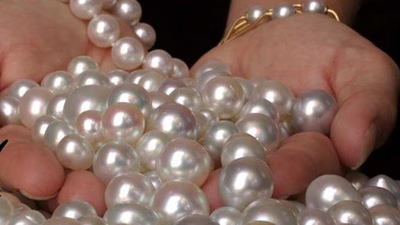
Pearls are categorized based on their cultivation methods, environments, and the mollusks that produce them. The two main types are natural and cultured pearls, with further distinctions between saltwater and freshwater varieties. Saltwater pearls, such as Akoya and South Sea pearls, are known for their high luster and larger sizes, while freshwater pearls are more abundant and come in various colors but typically have a lower shine. Akoya pearls, primarily from Japan and China, range from 2 to 10 millimeters in size and are often white or cream-colored. South Sea pearls, sourced from Australia and the Philippines, can be as large as 20 millimeters and exhibit luxurious luster in shades of white or gold. Mabe pearls have a unique shape due to their cultivation method involving a half-spherical nucleus. Conch pearls are rare gems known for their vibrant colors found in queen conch mollusks. Environmental factors like water quality and temperature significantly influence pearl characteristics, leading to variations in size, shape, and color among different types.
Tahitian pearls stand out for their dark hues cultivated in French Polynesia. Overall, the pearl industry is shaped by both natural processes and human intervention through farming techniques.
-

The Persian Gulf, particularly around Bahrain, has a rich history of producing some of the world"s finest natural pearls, known for their luster and unique colors. South Sea pearls from Australia, Indonesia, and the Philippines are also highly valued for their size and creamy hues. The Gulf of Mannar between India and Sri Lanka is recognized for its high-quality pearls with warm tones. Historically, the Persian Gulf"s pearl industry thrived until the early 1930s when oil discoveries shifted focus to more profitable ventures. This led to overfishing and pollution that devastated the pearl industry. Today, pearl oyster beds remain in the Persian Gulf, especially near Bahrain, where fishing has occurred for over two millennia. Despite other countries like Japan and Australia producing notable pearls, the Persian Gulf"s natural pearls are still considered among the best due to their unique environmental conditions. However, the legacy of traditional pearl diving has been largely overshadowed by industrial changes in the region. "
-
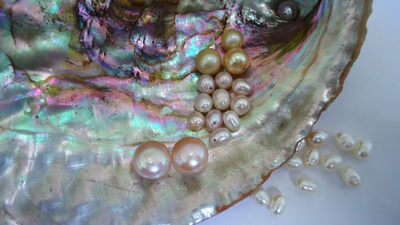
Natural pearls form organically within mollusks without human intervention, resulting from irritants like sand. They are rare and valued for their unique characteristics. Cultured pearls, on the other hand, are created through human intervention by implanting a nucleus into the mollusk, leading to nacre secretion. While they closely resemble natural pearls in appearance and are more affordable, distinguishing between the two can be challenging. Specific weight is one method of differentiation, with natural pearls typically weighing less than 2. 73. Cultured pearls exhibit luminescence under UV light, while artificial pearls are man-made from materials like glass or plastic and lack the organic qualities of natural or cultured varieties. The rise of artificial pearl production in China has significantly impacted the natural pearl industry in regions like the Persian Gulf. Understanding these differences is crucial for consumers and traders in the pearl market.
-

The price of pearls is influenced by several key factors including type, size, shape, luster, color, surface quality, and origin. Natural pearls and rare varieties like conch or Tahitian pearls are more valuable due to their scarcity. Larger pearls are generally more expensive, with significant price increases for larger sizes. Round pearls are the most sought after for their symmetry, while other shapes like baroque are less valuable. Luster plays a crucial role; pearls with high luster reflect light better and command higher prices. Freshwater pearls are typically less expensive than Akoya or Tahitian varieties. The South Sea pearl is the most expensive type, with prices ranging from $1,000 to over $100,000 based on size and quality. The origin of the pearl also affects its value; those from renowned regions like the Persian Gulf or South Sea are often priced higher due to their reputation.
Market demand and trends can further influence prices as consumer preferences shift. Overall, the value of a pearl is determined by a combination of these factors.
-
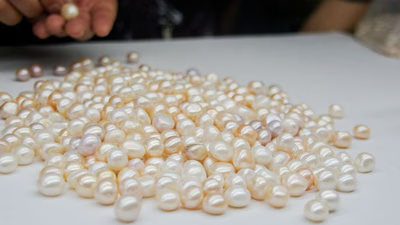
Natural pearls are gemstones formed within mollusks, such as oysters and mussels, when an irritant becomes trapped in their soft tissue. The mollusk secretes layers of nacre around the irritant, resulting in a pearl over several years. Factors like the species of mollusk and environmental conditions influence the pearl"s shape, luster, and color. Historically valued for their beauty, pearls have been traded for thousands of years, particularly in regions like China. They can vary in color from white to blackish gray and come in various shapes, with round pearls being the most sought after. The size of pearls typically ranges from 7 to 9. 5 mm, with larger and smoother specimens commanding higher prices. While natural pearls are rare and highly valued in jewelry, most pearls on the market today are cultured, created through human intervention to initiate pearl formation.
Cultured pearls resemble natural ones but are more affordable and widely available. "






